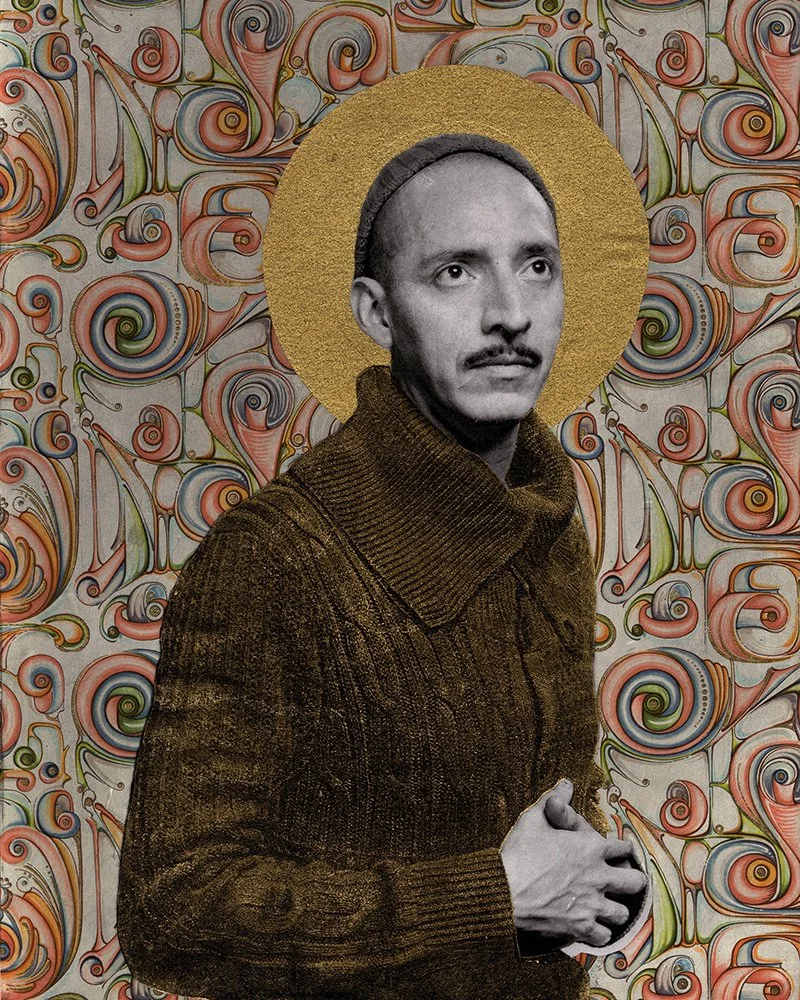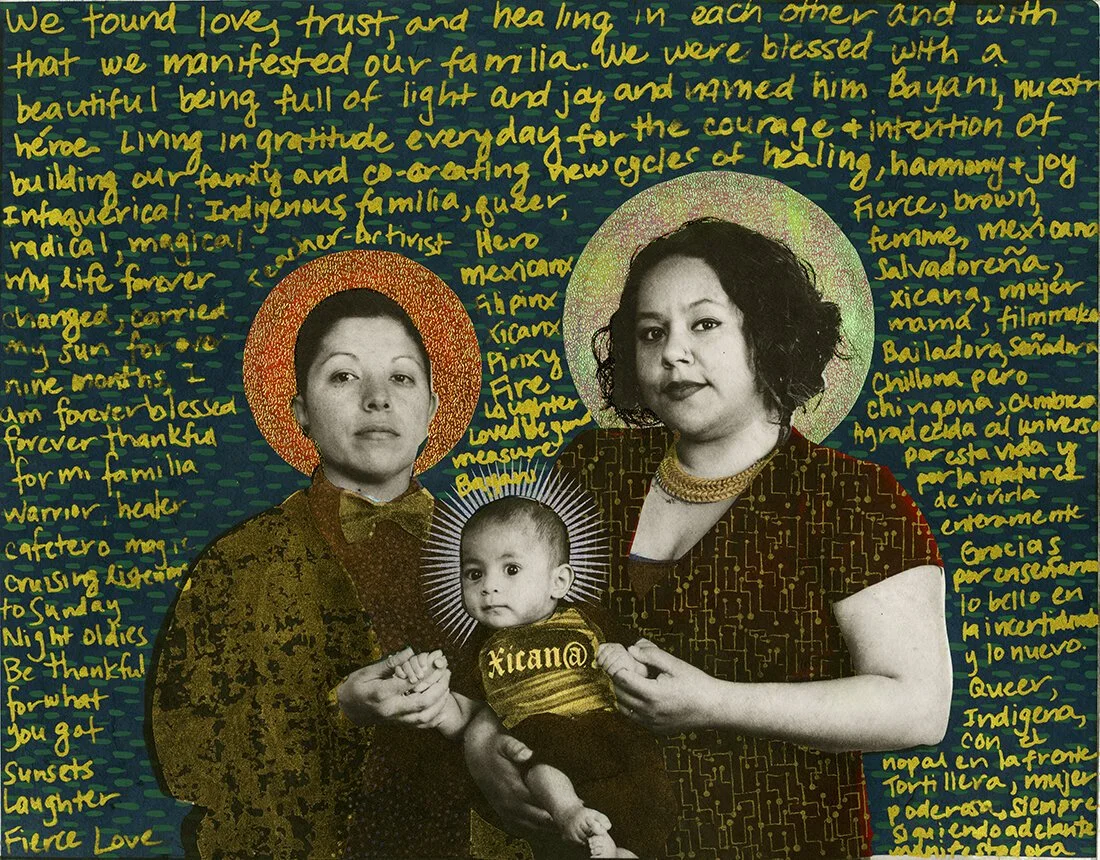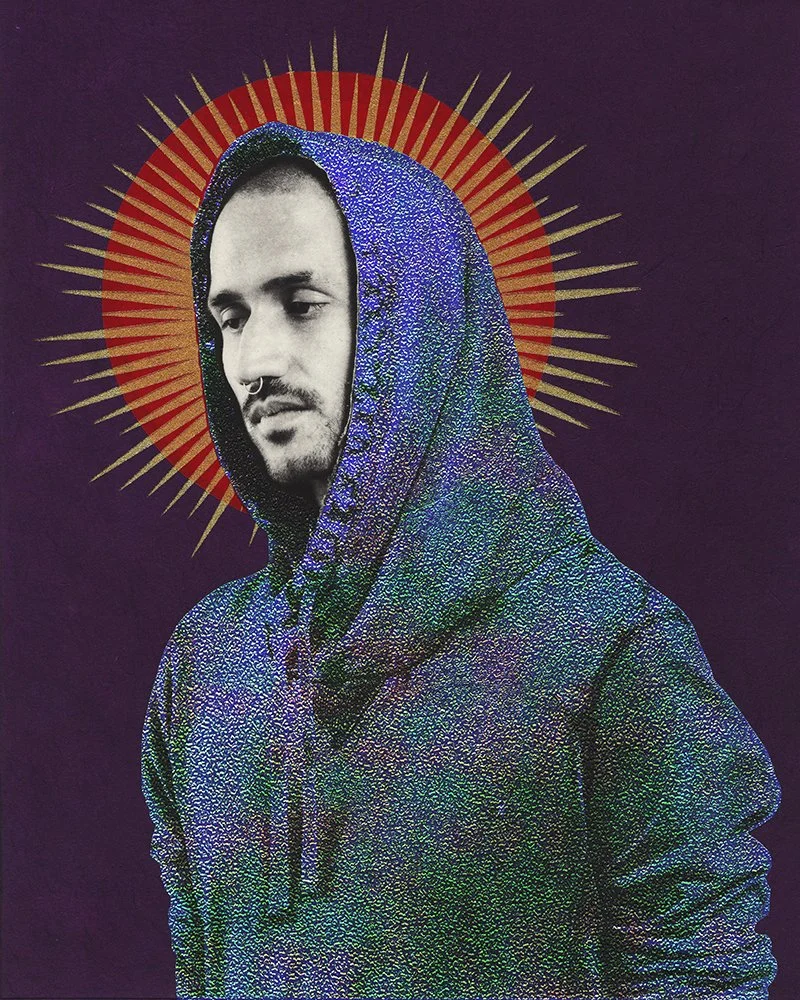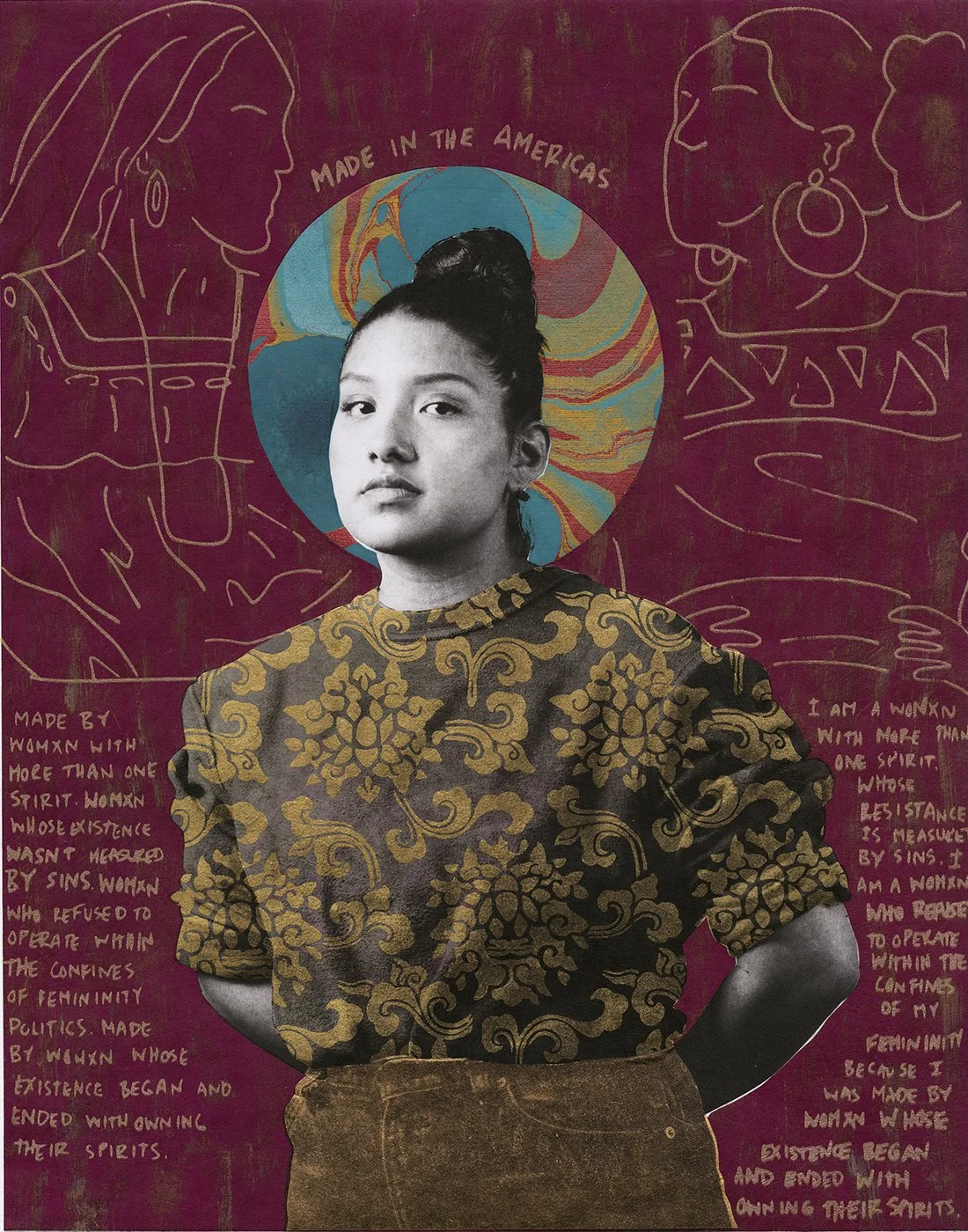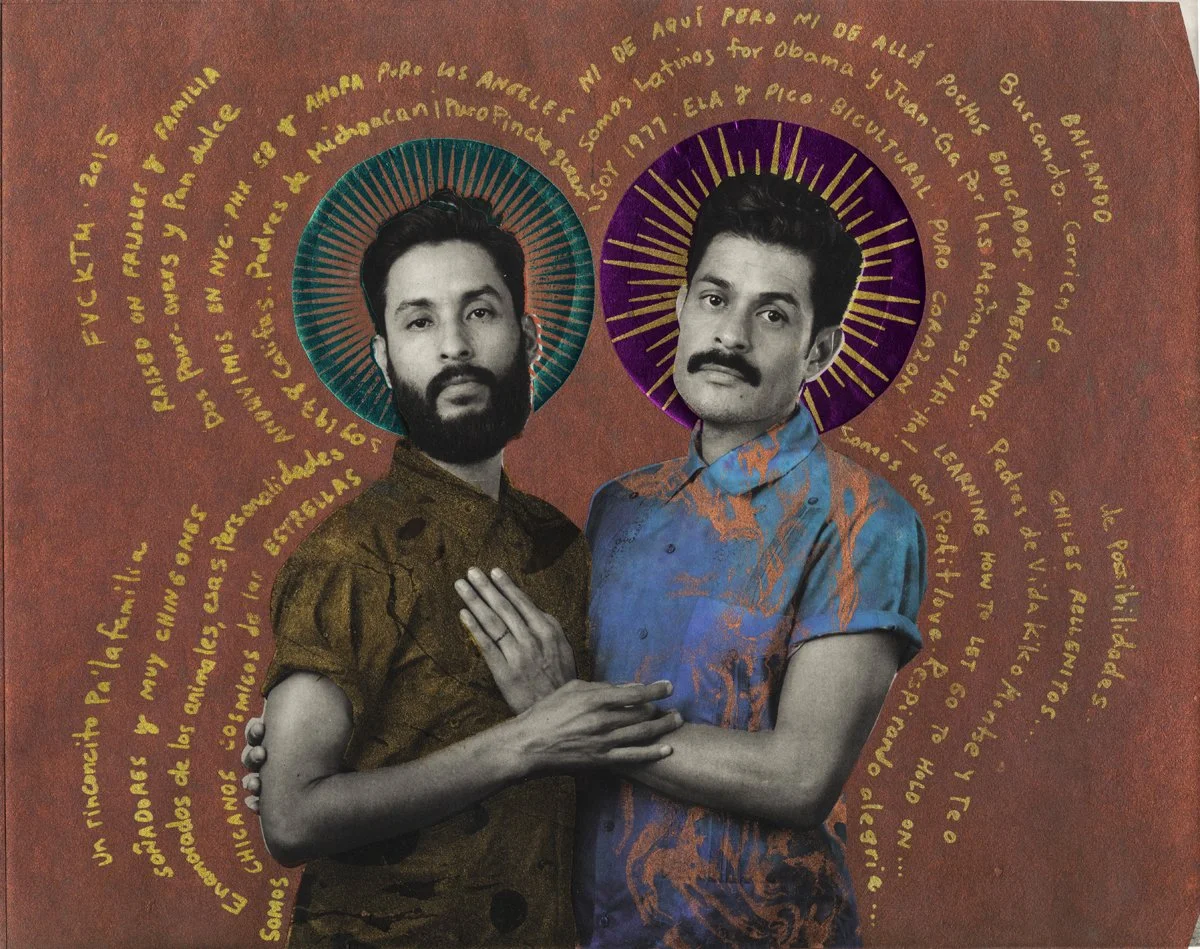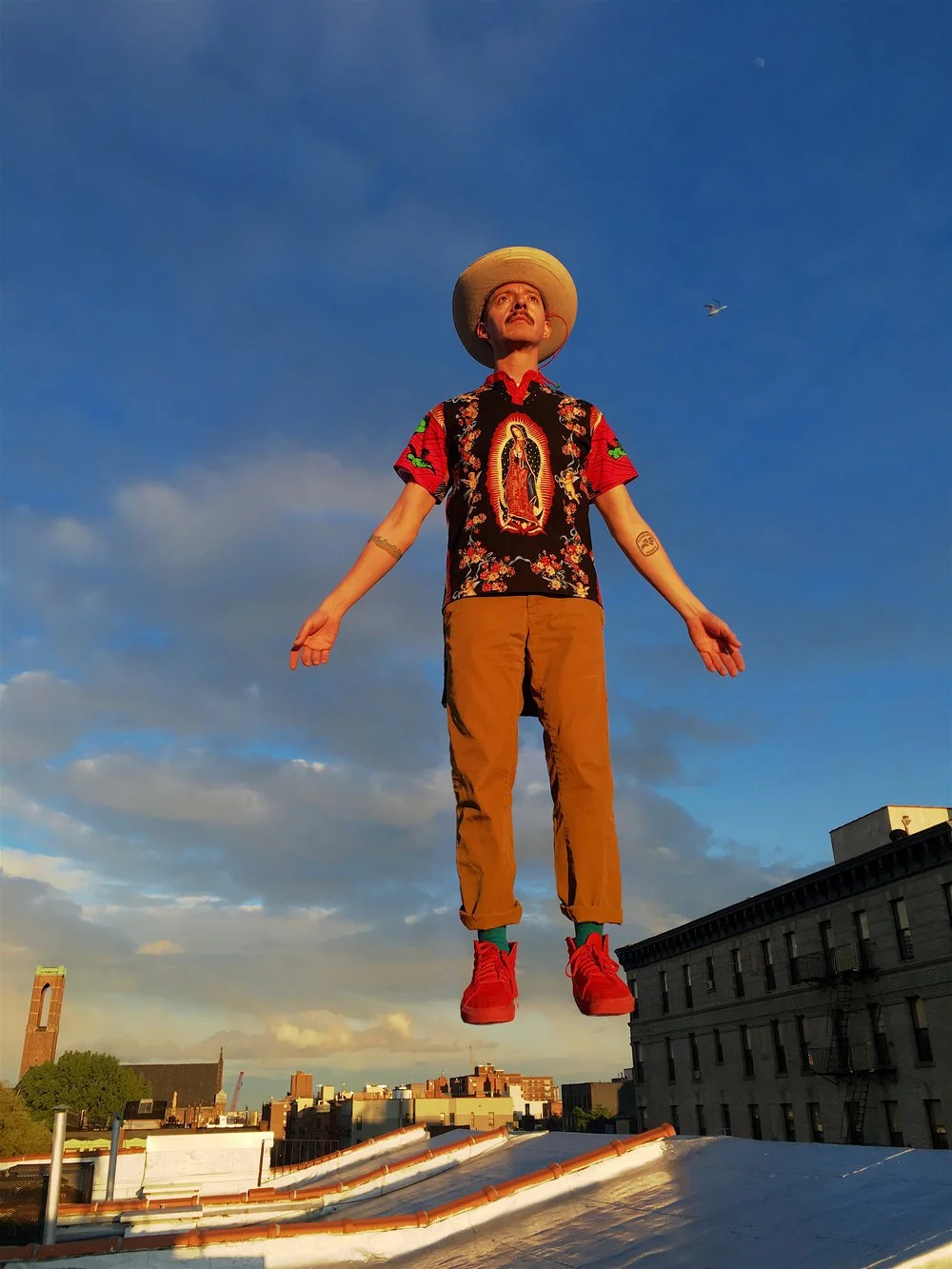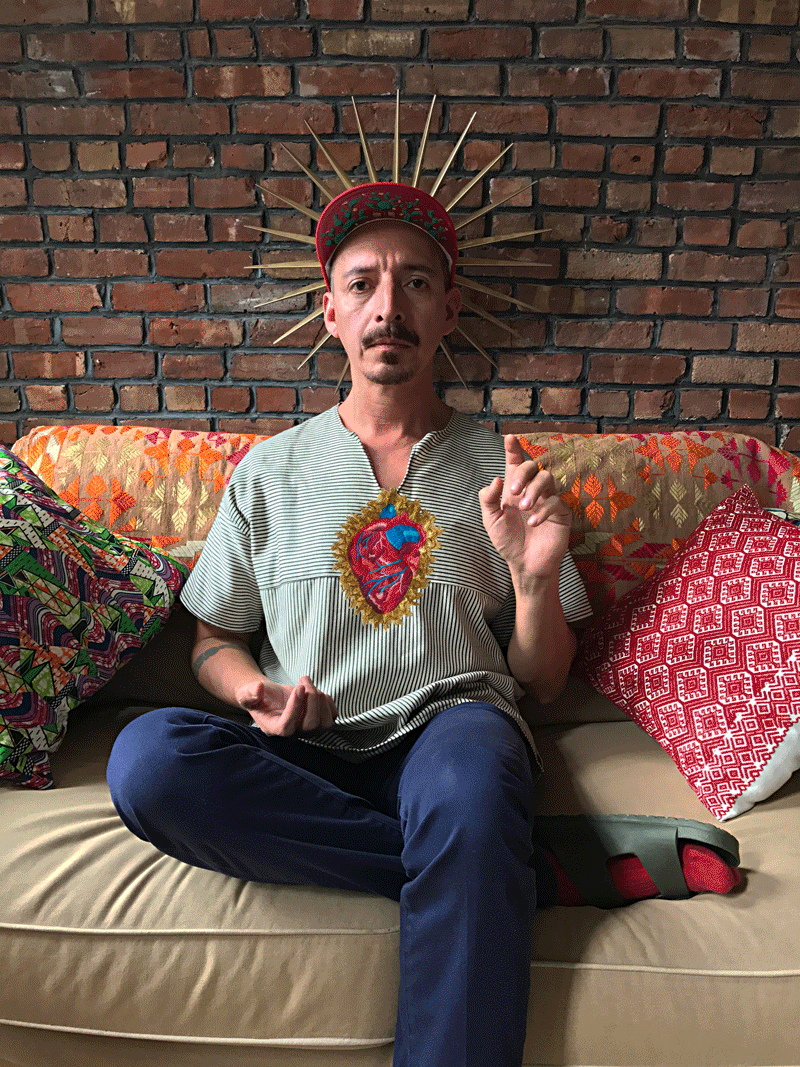St. Everyday (Part I): Queer Icons
Dr. Xochitl Alvizo profiles artist Gabriel García Román, creator of the QTPOC portrait series
Let me introduce you to Gabriel García Román, an artist of many trades and the creator of Queer Icons, a portrait series featuring queer Latinx artists, activists, and community organizers. Through his series, Gabriel visually represents people of the QTPOC community as the saints that they are: folks who live in ways that bring life to others. Each portrait is unique and fashioned in the style of Catholic icons, with typical motifs of Catholic religious art – halos, metallic tones, elaborate frames, and carefully positioned hands. The process of making the portraits into icons is slow and requires much patience—a process Gabriel describes as a meditative experience. Through this careful process and final outcome, he honors the work of each saint, honors their being, and presents the poet/artist/activist in a beautiful, empowered posture.
His is a very intentional labor of love.
Queer Icons portraits by Gabriel García Román; photogravure with chine-colle. Clockwise from top left: Castro, Bayani & Candy, 2019; Mitchyll, 2014; Gabriela, 2018; and Carlos & Fernando, 2016.
Gabriel intended for Queer Icons to fill a gap in how the QTPOC community has (or has not) been represented in the art world and other media. This absence of representation became a personal and social concern for him, both in terms of his own identity as part of the QTPOC community and more broadly as well. Among those in his mind were queer young people isolated in small towns who might not have or see themselves reflected in people with whom they can identify or look up to—an experience he had firsthand. Gabriel came to his vocation, and to art school, later in life (late thirties). And while there, he noted that he never saw himself or his community “represented in any way—[not] in any of the art spaces, galleries.”
This lack of QTPOC community representation in both virtual and physical art spaces became the inspiration for the Queer Icon series, which aims to change the narrative. For Gabriel, not getting to have imagery “that looks like them” means not having art as a source that “gives them power.” And wanting to give people his art as a source of power is also part of why the people Gabriel highlights as icons are not high-profile folks but “everyday saints” doing their work on the ground.
“I don't want this to be a popularity contest,” he says, “where I want the big names who are in the media. No, I want the local person who started a kitchen for trans women in Harlem…Or, you know, somebody that's not necessarily getting all the media attention.”
In filling the representation gap, Gabriel intentionally uses the power of art to both humanize the QTPOC community in an unjust world and to empower those it marginalizes. He thus works painstakingly to capture the human dignity and the story of each person he photographs.
Gabriel on the making of Queer Icons
Gabriel speaks of his work as his practice. The meditation and intentionality that he puts into his practice imbues the icons with spirit. When he gets to witness people appreciating his art, he recognizes that they are not only receiving the spirit he has put into the work but also the power of the saints themselves. His intention for this encounter to, in turn, help draw out the viewer’s own power– a power that inspires Gabriel even further. Seeing somebody's eyes light up when they are before a Queer Icon motivates him to then do “the next one, and the next one…” Gabriel acknowledges the exponential growth of the project: “It started off as something very personal to me…[but] at this point, [it] has become a lot bigger, and it’s no longer my project – now it's my community’s project.” Because of such scale, the burden of “perfection” has not been an obstacle to his work. He embraces the practice, along with all the “mistakes” that may be involved, since they are part of what brings the work to completion– a concept many of us in the academy often have a difficult time embracing.
Gabriel on the practice of craft
In hearing Gabriel speak about his work—at once so personal to him but which he also holds with openness and easily gifts back to his community of inspiration—I’m struck by his groundedness. He embodies the very power he wants his Icons to convey to the world, and he is very clear about the community of accountability to whom he feels responsible. I covet the ease he seems to have with himself, and the focus and conviction with which he approaches his art. And yet a distinct “lightness,” both in his very being and in his art, also comes through.
His self-portraits (not part of the Queer Icon series) often show him floating or elevated as if ascending to the heavens. His groundedness is also his lightness, a connection he acknowledges. As he moved into his vocation as an artist, as he embraced his art as his practiced, and as he became increasingly comfortable with himself and the truth of who he is – neither from “here” nor from “there”—Gabriel came to know and embrace his own worth, and that, he says,
“is very similar to an ascension to the heavens…Knowing yourself, getting to know yourself, is definitely almost like going to paradise, because nothing that somebody could say can knock you down, because you know who you are, you know your worth.”
Knowing one’s worth and recognizing the worthiness of others, especially those who we dehumanize in society – personally, systemically, structurally – is very much what Gabriel’s Queer Icon series is about. I see how the work comes from his own sense of vocation, intention, and commitment to his community.
I connect this devotion with the ways that the Hispanic Theological Initiative (HTI) calls us to be true to our own sense of self and encourages us to bring that to our writing, even as we acknowledge all the complications that surround us. Just as Gabriel attunes to his “subjects,” we must similarly be attuned to ourselves and to one another so that we can keep on this road together, in the in-between spaces that are oftentimes our home as Latinx folks in the academy. We must stay grounded in ourselves and in community, so that we can also elevate.
Gabriel on the beauty of community, reflection, and struggle
View Gabriel García Román’s work at http://www.gabrielgarciaroman.com/.
COMING SOON…
St. Everyday (Part II): Mais Viva!
Dr. Xochitl Alvizo sums up Gabriel García Román’s visit to her Queer Theory class at California State University, Northridge and her students’ engagement with his work, along with the scholarship of Black trans feminist scholar Dr. Dora Silva Santana of John Jay College, CUNY.
Photo and animation: Gabriel García Román

